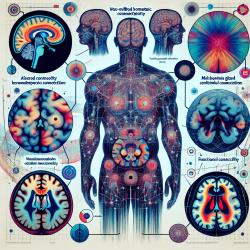Managing type 2 diabetes (T2DM) effectively requires a multifaceted approach that addresses not only the medical aspects but also the lifestyle changes necessary for optimal health. A recent study titled "The interdisciplinary team in type 2 diabetes management: Challenges and best practice solutions from real-world scenarios" highlights the pivotal role of interdisciplinary teams (IDTs) in achieving these goals.
Why Interdisciplinary Teams?
Interdisciplinary teams bring together healthcare professionals from various specialties to work collaboratively on patient-centered care. This approach has been shown to improve glycaemic control and reduce cardiometabolic risks, ultimately leading to better patient outcomes.
- Patient-Centered Approach: IDTs focus on individualized care plans that cater to the unique needs of each patient.
- Shared Goals: Successful teams operate under shared objectives, ensuring that all members are aligned in their efforts to manage diabetes effectively.
- Strong Leadership: Effective leadership is crucial for coordinating efforts and maintaining a cohesive team dynamic.
Real-World Success Stories
The research paper discusses several case studies from around the world, demonstrating how IDTs have been implemented successfully despite challenges such as resource constraints and hierarchical structures.
- The Ochsner Medical Center’s Diabetes Empowerment Clinic: This initiative improved patient access to specialist care through coordinated management strategies, resulting in significant reductions in HbA1c levels among participants.
- The Hong Kong Diabetes Registry: A structured IDT approach led to improved risk stratification and management, reducing cardiovascular events and enhancing patient outcomes.
- The UK’s Leicester Model: By integrating primary care with specialist services, this model has proven cost-effective while maintaining quality care for complex diabetes cases.
The Key to Success: Overcoming Challenges
The implementation of an IDT approach is not without its challenges. Common barriers include limited resources, inadequate access to specialties, and traditional hierarchical structures. However, with strong leadership and a commitment to collaboration, these obstacles can be overcome.
"The role of patients in their own disease management is crucial."
This statement underscores the importance of involving patients as active participants in their care. By fostering open communication and shared decision-making, IDTs can empower patients to take charge of their health.
Your Next Steps
If you're a healthcare practitioner looking to enhance your skills in diabetes management, consider exploring further research on interdisciplinary approaches. Implementing these strategies can lead to significant improvements in patient care and outcomes.










